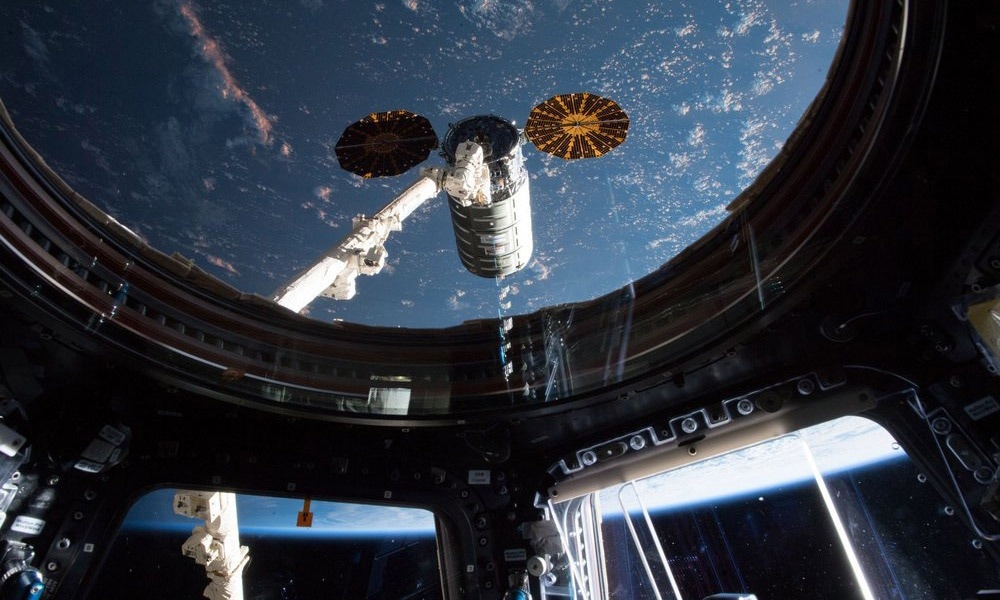Nov 16 2023
Nicholas Bigelow, a professor at the University of Rochester, contributed to the development of experiments carried out at NASA’s Cold Atom Lab to investigate the underlying principles of the natural world.

The Cold Atom Lab on the International Space Station produces clouds of “ultracold” atoms, the absolute coldest temperature that matter can reach. Through experiments at the lab controlled remotely on Earth, a team of international researchers produced Bose-Einstein condensates—a quantum state of matter made from an atomic gas cooled to temperatures close to absolute zero. Image Credit: JPL/NASA
For the first time in space, a multinational team of scientists created a quantum gas using two different types of atoms at NASA’s Cold Atom Lab facility on board the International Space Station. The accomplishment, described in a new study that was published in Nature, is a step closer to launching existing quantum technologies from Earth into space.
The scientists created Bose-Einstein condensates—a quantum state of matter composed of an atomic gas chilled to temperatures very near to absolute zero—through remotely operated experiments on Earth.
These quantum tools, according to Nicholas Bigelow, the Lee A. DuBridge Professor of Physics and an optics professor at the University of Rochester, can be used to further current understanding of the fundamental laws of nature, solve cosmic mysteries, and improve the understanding of the fundamental characteristics of quantum matter and navigation between planets.
Reaping the Benefits of Zero Gravity
There are a lot of things in fundamental physics where being in the presence of gravity actually limits how precise a measurement you can make. Removing gravity allows you to make a much longer observation time to get more precision in the measurement, and it allows you to see delicate effects that might be masked by gravity.
Nicholas Bigelow, Lee A. DuBridge Professor of Physics and Optics, University of Rochester
With this additional capability, the Cold Atom Lab is now able to investigate quantum chemistry, which is concerned with the interactions and combinations among various atom types in a quantum state, in addition to the quantum characteristics of individual atoms.
The Cold Atom Lab will enable researchers to explore new areas of research and gain insight into the subtleties of conducting experiments in microgravity. Using the unique facility to create new space-based quantum technologies will require an understanding of this kind.
The equivalence principle, which states that gravity acts on all objects equally regardless of mass, is one enigma that scientists hope to unravel. The fundamental idea of Albert Einstein’s general theory of relativity, which forms the basis of contemporary gravitational physics, is incompatible with the principles of quantum physics, which explain the behaviors of small things like atoms.
The equivalence principle has already been tested at atomic scales by scientists using atom interferometers on Earth, but at the Cold Atom Lab, they can test it more precisely in space.
A Route to Understanding Dark Energy—And to Better Sensors and Clocks
According to Bigelow, the scientists intend to conduct experiments with quantum gases and a two-atom interferometer to measure gravity precisely to get insight into the nature of dark energy, the enigmatic force responsible for the universe’s accelerated expansion. What they discover might result in the creation of precise sensors with a variety of applications.
Bigelow added, “We could make sensors that are extremely sensitive to small rotations and essentially use these cold atoms in the Bose-Einstein condensate to make gyroscopes. These gyroscopes could give us a fixed reference point in space that could be used for deep-space navigation. We are also developing a number of things that could lead to better clocks in space, which are crucial to so many things in modern life such as high-speed internet and GPS.”
Journal Reference:
Elliott, E. R., et al. (2023) Quantum gas mixtures and dual-species atom interferometry in space. Nature. doi:10.1038/s41586-023-06645-w.